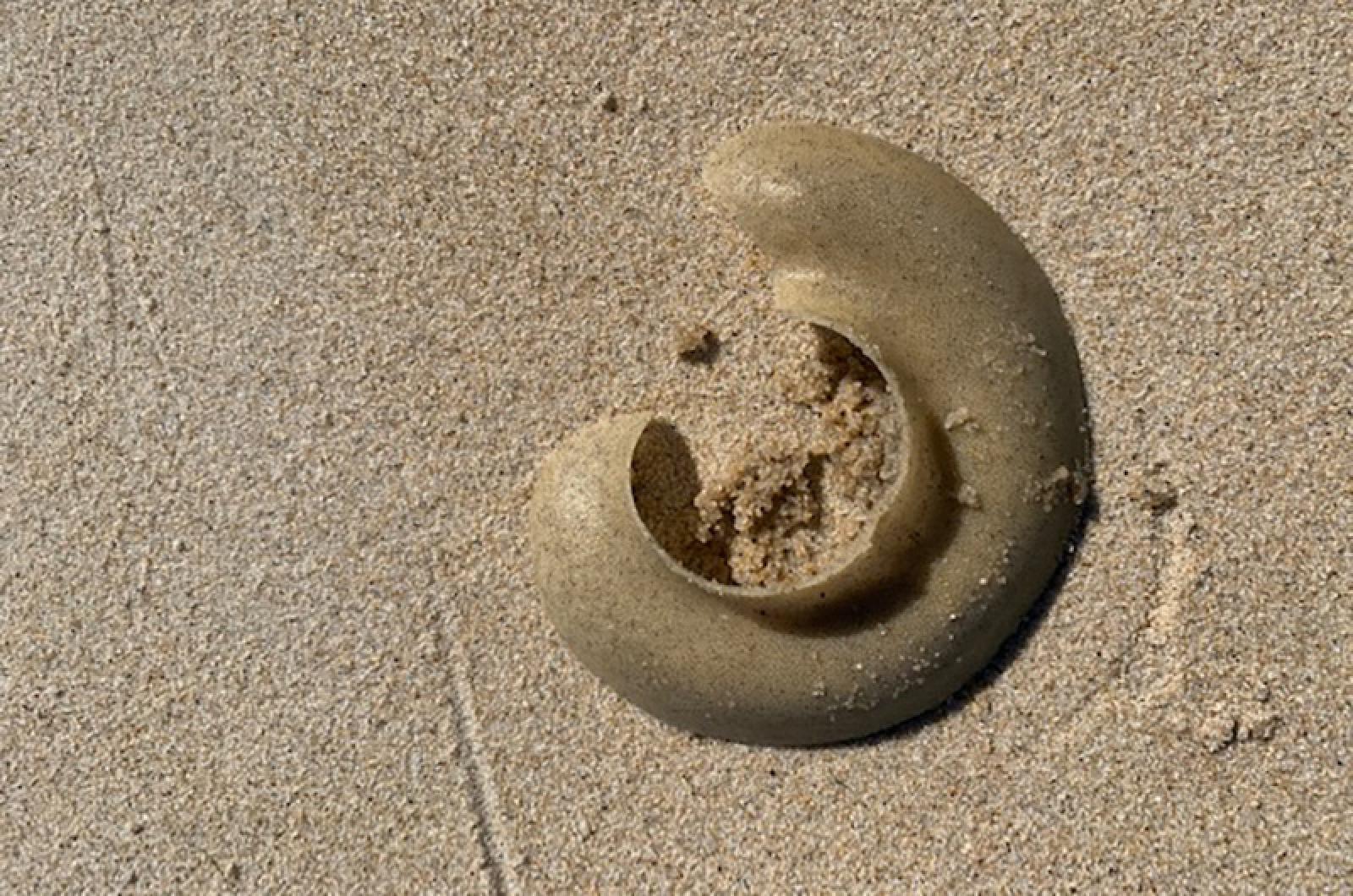Leonardo da Vinci admired the human foot, noting that it “is a masterpiece of engineering and a work of art.” He might have been even more impressed with the foot of the moon snail.
Moon snails, which are local shelled marine mollusks, have bragging rights for their large slimy muscular foot. It seems to be a perfect structure — good for just about everything.
Start with locomotion. To move, the snail will glide along using that foot. It also helps the snail stay put underneath the sandy or muddy ocean floor, even though it was the same instrument the snail used to get underground in the first place, by digging into the substrate. A paddle, a shovel and an anchor, all in one.
All of that and more can be accomplished by the foot of the moon snail because of the its unique ability to grow. At its smallest, the foot, called a “propodeum,” will fit into its round, moon-shaped shell. However, all bets are off when the foot takes in water and expands. This muscle can absorb water to get bigger and, when fully engorged, it swells to four times its normal size. At its largest, the foot can be three times as long as the snail, and cover the outside of the snail’s shell completely.
The most impressive attribute is the foot’s role in reproduction. Believe it or not, moon snails make mucus magic and baby moon snails with the help of this organ.
In the late spring and early summer, female snails reproduce by creating sand collars that hold their eggs. These sand collars, which resemble old-fashioned removable collars or small sand-colored toilet plungers, are constructed with the help of that foot. Yet another feat of the foot, and the process is astonishing.
First, the mother snail will use her foot to collect sand grains and place a layer on and around her shell with her remaining at the center. Mucus will be added to harden and hold together the sand, which takes the shape of the sides of her shell. Next, she releases up to half a million eggs from cilia (hair like projections) on her foot onto the stiff sand collar. Another layer of sand and mucus encloses the eggs into the collar, much like the layers of a sandwich. She extricates herself from the collar by using that versatile foot to drag herself below the surface and under the collar, and she remains buried nearby.
The collar, a concave disc, holds the eggs until they hatch. The eggs eventually leave their protective collar, which breaks in the process, and these snail collar nests end up on the beach. Curious beachgoers have been reporting them on up-Island shorelines, including at Lobsterville and Squibnocket.
Finders marvel at their shape and durability. Fresh collars are still rubbery and, if whole and intact, still have eggs in them. Hold them up the sunlight to see the darker brown eggs. Brittle and broken collars are eggless, and, as the mucous dries, they disintegrate quickly at your touch.
A final function of that remarkable foot is feeding. It is big enough to encircle entire prey, and strong enough to suffocate it or pull open the shells of other bivalves to eat the animal inside. And if that method isn’t successful, the moon snail can also use its tongue-like radula to drill a hole in the shell of its prey and suck in its meal — if it can’t get its foot in the door.
We are all aware of the need to put our best foot forward, but frankly I doubt that we can compete to the moon snail in this respect.
Suzan Bellincampi is director of the Felix Neck Wildlife Sanctuary in Edgartown, and author of Martha’s Vineyard: A Field Guide to Island Nature and The Nature of Martha’s Vineyard.







Comments
Comment policy »